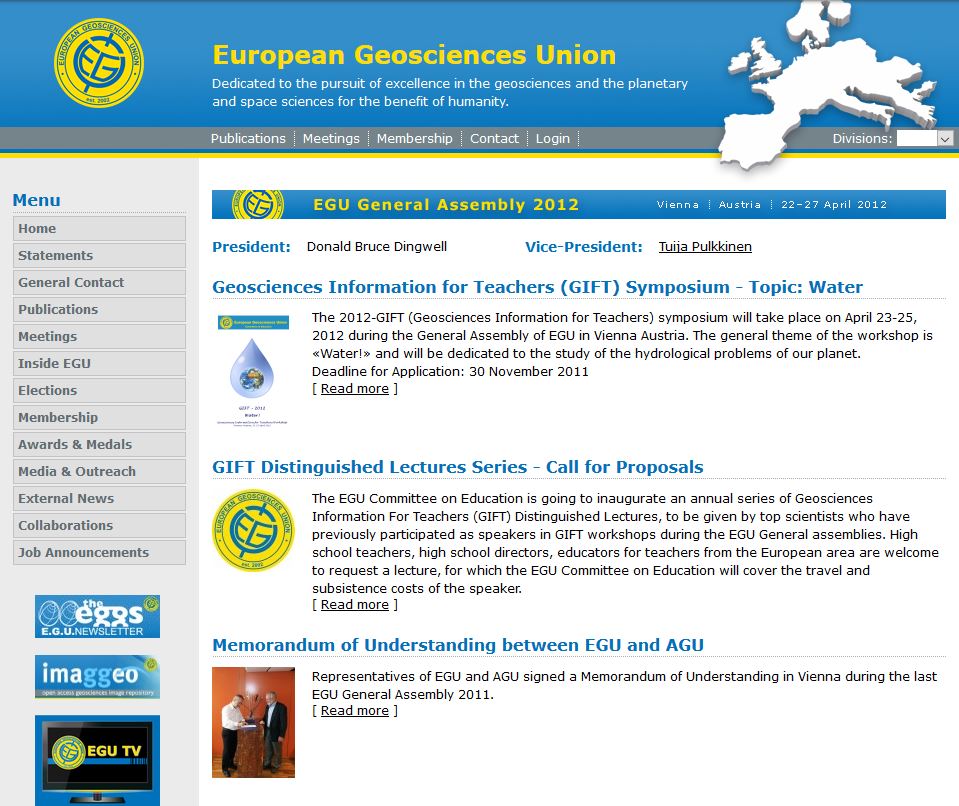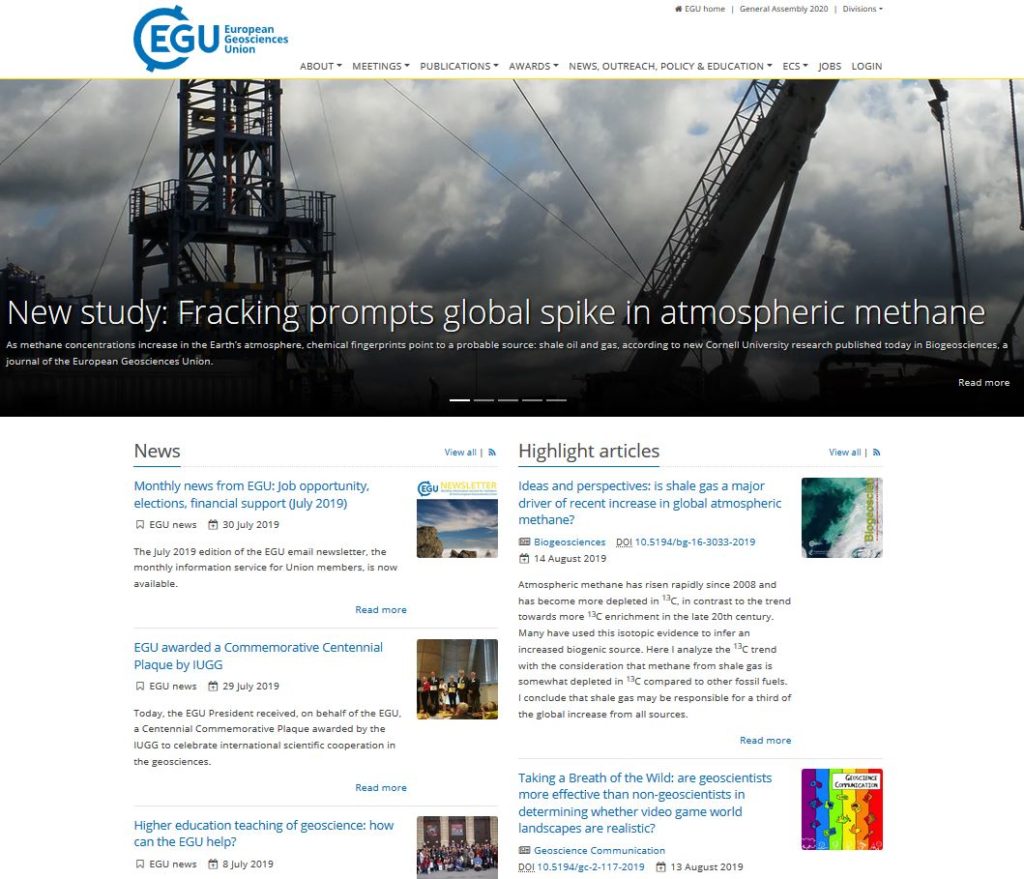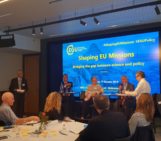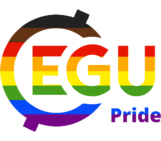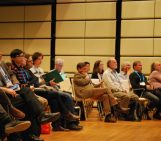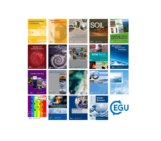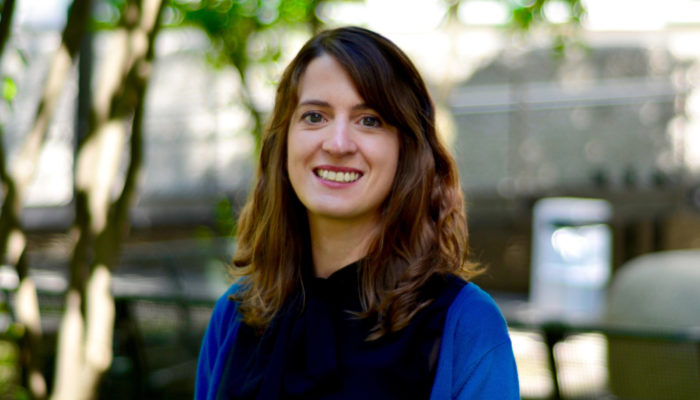
GeoTalk interviews usually feature the work of early career researchers, but this month we deviate from the standard format to speak to Bárbara Ferreira, EGU’s Media and Communications Manager. Bárbara has been an integral part of the EGU since September 2011, from coordinating science communication between the Union, journalists and the public at large, to overseeing many of EGU’s outreach activities, such as Planet Press, the EGU Public Lecture and the mentoring programme.
She’ll soon be starting an exciting opportunity at the European Southern Observatory, but before she goes, we’ve asked her to reflect on some of her most memorable times with EGU.
Before we get stuck in, could you introduce yourself and tell us more about your career path? How did you first get into science communication and outreach?
When I was about 13 or 14 years old, I had a natural sciences’ teacher at school (in Leiria, Portugal, where I’m from) who taught us astronomy and encouraged us to ask as many questions as we wanted in class. Even though I was one of those teenagers who are generally too shy to ask questions, I loved that we could query him about what we were learning to our hearts’ content. So that’s how I decided I wanted to be an astronomer.
That lasted until about halfway through my PhD (Mathematical Astrophysics, Cambridge, UK), when I learnt what it was actually like to work in astronomy. I found that what I enjoyed the most was writing papers – because they helped me put my research into a broad context, – and giving talks – because I got to present my work to others. I found that I liked to communicate science more than doing science, and I preferred to have a broad overview about many topics than to have deep knowledge about one small area of research.
I continued (and finished) my PhD, but since I was already pretty certain I did not want to stay in research, I started looking around for ways to get experience in science communication. I went to science writing and science communication workshops, I wrote for a couple of science magazines associated with the University of Cambridge, I did an internship at the Parliamentary Office for Science and Technology in London, I taught a summer science course to school students, I started a science blog, and I did some freelance work as a science editor. The experience I gained eventually helped me land an internship in science journalism at the European Southern Observatory (ESO), near Munich. These varied short-term stints helped me trial out different forms of science communication and outreach so that I could figure out exactly what it was that I wanted to do.
What motivated you to be a part of the EGU office?
After a couple of months at my ESO internship, I knew I wanted to be an institutional science communicator and I knew I had the experience and skills to look for a longer-term position. And after having travelled to and lived in quite a few countries in the previous year, I also knew I wanted to stay put. So the opportunity to be a science communicator at the EGU office in Munich fitted like a glove. I have to say I had never heard about the EGU before, coming as I did from an astronomy rather than a geoscience background, but the more I read about the organisation, the more excited I got about the possibility of landing that job. I especially liked that the EGU covered so many different scientific subjects, which meant there was potential to learn about research in subjects from earthquakes and volcanoes to biogeosciences and climate science. The fact that EGU organises the largest geoscience conference in Europe and publishes so many open access journals were also motivating factors to apply.

The EGU Executive Office staff in 2012, celebrating the Union’s 10th anniversary at the Munich headquarters. From left to right: Edvard Glücksman (Science Communications Fellow), Karen Resenberger (Secretary), Philippe Courtial (Executive Secretary), Bárbara Ferreira (Media and Communications Officer).
In your eight years of working with EGU, in what ways have you seen the Union grow the most?
So many ways! Brace yourselves for a long answer!
I guess I should start by talking about how much more the EGU does in terms of communication and outreach now than when I started. There was one EGU blog back then, and a Twitter account, but they focused mostly on the General Assembly. There were press conferences at the meeting, but no press releases year-round nor much in terms of policy or public engagement activities. Now we have a very popular and successful EGU blog and some 20 division and network blogs, we have multiple active social media accounts (like Twitter, Facebook and Instagram) with more than 60,000 followers combined, and many of our divisions and journals have a presence on a number of social networks. We now have a more modern logo and website, with new content every week/day, and a monthly newsletter that brings that content to EGU members at the end of each month. We have highlight articles and press releases that regularly bring research published in EGU journals to broader audiences. We have a dynamic press centre at the General Assembly with press conferences that highlight science presented at the meeting to a growing number of journalists and members of the public. In the new Imaggeo, we have a modern home for some of the most beautiful geoscience images around the web. We have public engagement events, in Vienna and elsewhere in Europe, we offer public engagement grants and science journalism fellowships, and organise a number of activities to bring scientists and policymakers together. And so much more (really, check the various sections of the EGU website!), all thanks to the hard work of volunteer EGU officers, especially past and current members of the Outreach Committee, and staff at the EGU office, including past employees.
- EGU’s main page from September 2011.
- EGU’s main page today. Look how far we’ve come!
Growing our communication and engagement efforts was also possible because the EGU was growing in other ways (growth that is now supported by a long-term strategy).
The EGU General Assembly went from about 11,200 participants at my first meeting in 2012 to over 16,000 this year. And it became more engaged with society too, with more sessions, and a lot more interest from participants, in science for policy, science communication, and science education, not to mention an artists in residence programme.
The same can be said of EGU publications, five of which were launched after I started, including one on Geoscience Communication. The awards and medals the EGU gives out grew too, with the addition of the Katia and Maurice Krafft Award for geoscience outreach and engagement, and the Angela Croome Award, for Earth, space and planetary sciences journalism.
The EGU also gained a committee in the past eight years, the Topical Events Committee (which did not exist as a stand-alone committee before), and with it came new conference series, new training schools, and the Galileo Conferences. And we gained a working group, focused on the ever-more important issues of diversity and equality in (geo)science.
Last but not the least, the EGU grew immensely in the ways in which it represents and supports early career scientists who now have a permanent contact point at the EGU office, have representation in Council, and have representation at division level in nearly all divisions.
What’s something about the EGU that you wish more people knew about?
How much time, effort and dedication people who work voluntarily for the Union put into it. At present, there are only seven employees at the EGU office. And, yes, our long-term, symbiotic partners Copernicus, who have far more employees than we do, support us greatly, handling the EGU General Assembly logistics and publishing the EGU journals. But everything else, from defining the scientific programme of the EGU General Assembly to evaluating proposals to EGU conferences or grants and coordinating and managing improvements in EGU publications, is (mostly) done by volunteers. I wish more people knew how much time these volunteers, together with EGU and Copernicus staff, spend carefully examining and discussing feedback people provide on EGU activities, namely the EGU General Assembly, to make sure we can fix what’s wrong the following year and improve what’s right. How much enthusiasm is put into organising the GIFT programme for teachers, or discussing new and exciting education and outreach activities. How much effort is put into promoting open access and interactive public peer-review.
Aside from that, I wish more people knew that we are so much more than a conference and do so much outside of the EGU General Assembly: read my answer to the previous question if you haven’t yet!
As part of your role, you highlight new research published in EGU journals through press releases year-round and press conferences at the EGU General Assembly. What have been some of the most memorable releases and press conferences to you?
One of the most memorable press releases we’ve published was a story on hair ice. It was not groundbreaking science, but it was a curious piece of research about a type of ice you can see in some places under certain weather conditions, usually in winter. The paper happened to come out in the middle of summer, and I thought not many journalists would report on it, so I decided to post the release on Reddit, to give it an extra boost. I’d done it with other releases before, without much success, but that one took off. By the time I looked at the Redddit thread again, there were hundreds of comments about how cool the phenomenon was, how much hair ice resembled a certain US politician’s hair, and about Reddit’s “hug of death”. The release reached the Reddit frontpage and the EGU website crashed with so many visitors trying to access the page in a short time. We had another release reach the frontpage recently, but the hair ice story is still by far our most popular in terms of number of pageviews.
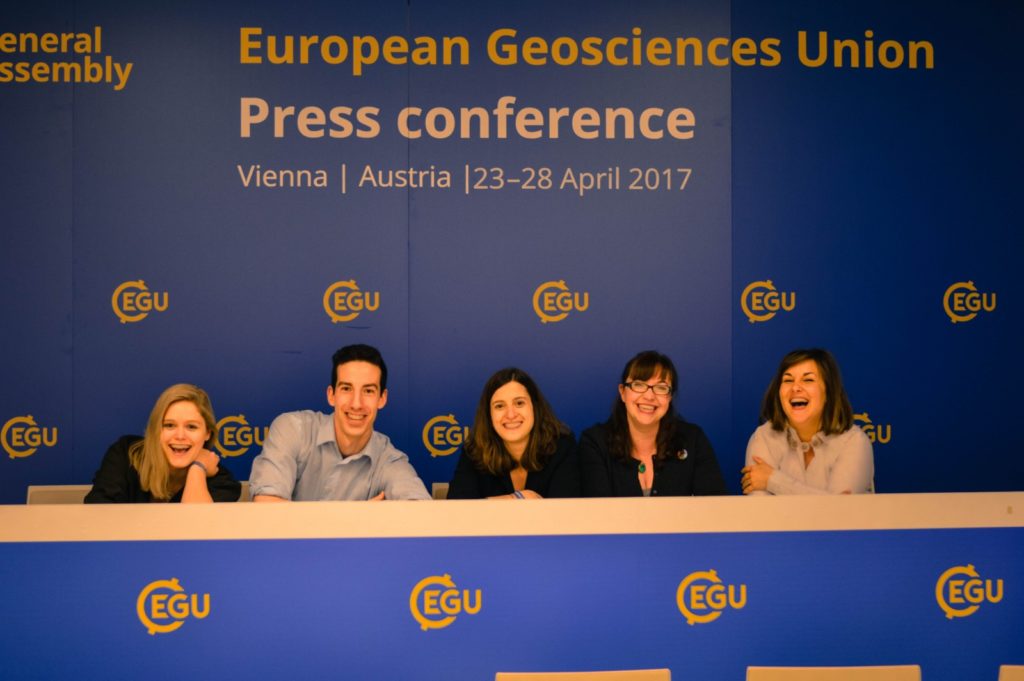
The EGU General Assembly 2017 Press Centre with (from left to right) Keri McNamara, Kai Boggild, Bárbara Ferreira, Hazel Gibson and Laura Roberts Artal.
At the General Assembly, there were many popular and memorable press conferences. I think two stories stand out in particular because they were sort of quirky and unique and I knew, as soon as I read the abstracts, that they would be hits with journalists. One was a presentation by Paul Williams back in 2013 about research done by him and Manoj Joshi on climate change increasing turbulence on transatlantic flights. Everyone knows that aviation contributes to climate change, but finding out that climate change could impact aviation was somewhat surprising, and I think that’s why the story was so popular. Another memorable story was ‘Screaming clouds’, a presentation given by Helene Muri on behalf of Svein Fikke, who lead research on how mother-of-pearl clouds may have inspired the iconic Scream by painter Edvard Munch. I randomly found that abstract in the 2017 General Assembly programme by searching for the word “painting”.
What has been some of your favorite parts of working with EGU? What will you be missing the most?
I will miss the people the most. I’ve had the pleasure to meet and work with amazingly talented and dedicated individuals during the past 8 years, who also happen to be incredibly nice and good people. Having the chance to work together with EGU office and Copernicus staff, EGU past and present volunteers and the regulars at the General Assembly press centre has probably been the best part of working with EGU.
I will miss the science too. It could be depressing at times to write about yet another paper or feature yet another abstract highlighting all the different ways in which humans are affecting our planet, but it was also rewarding to have the opportunity to bring that ever-more important research to broader audiences. And I’ve loved having the chance to learn and write about topics as varied as glacial geoengineering, water’s role in the rise and fall of the Roman Empire, or great-earthquake hotspots.
Now it’s time to go back to astronomy.
Interview by Olivia Trani, EGU Communications Officer

